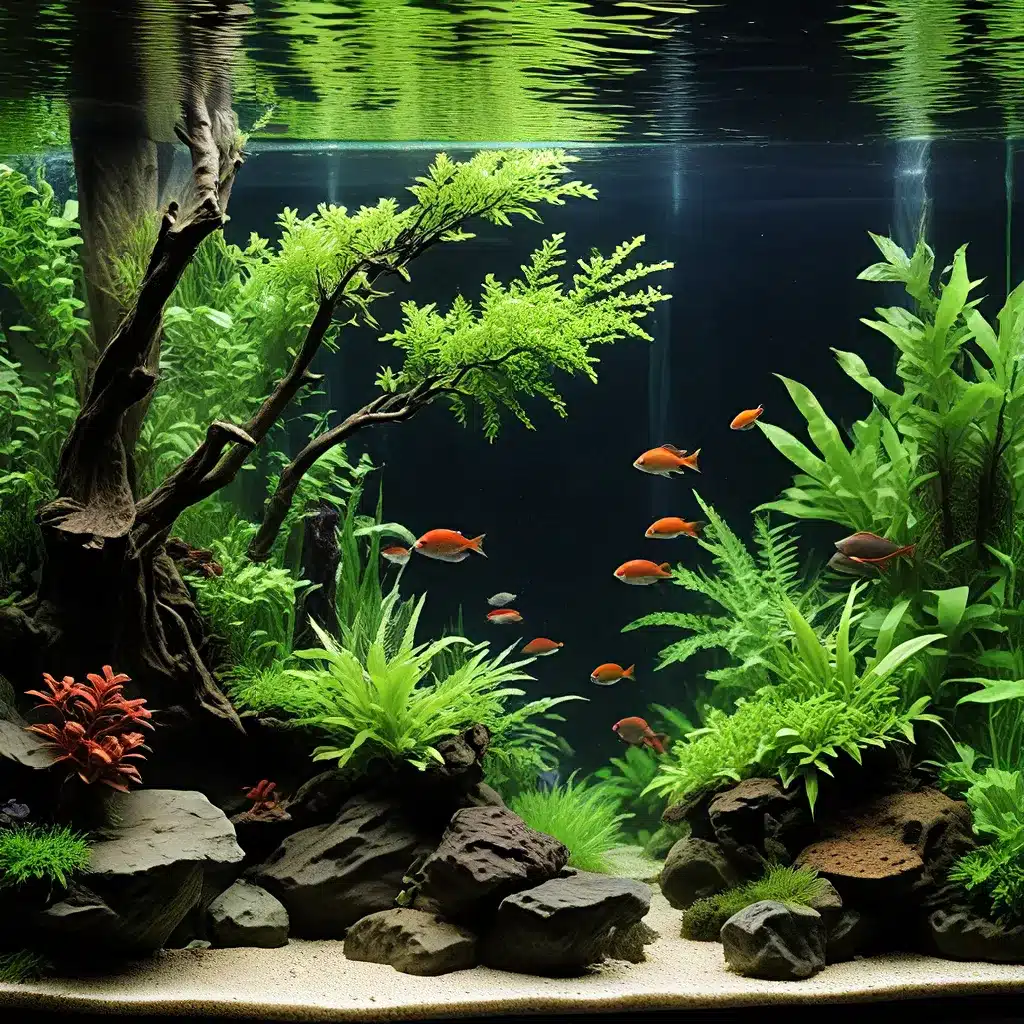
Understanding the Role of Water Flow in Aquarium Ecosystems
Maintaining a healthy, thriving aquarium goes far beyond simply filling the tank with water and adding fish. One of the most crucial elements in creating a balanced and sustainable aquarium environment is water flow. Proper water circulation is essential for promoting oxygenation, distributing nutrients, and removing waste – all of which are vital for the well-being of your aquatic inhabitants.
In this comprehensive guide, we will explore the importance of water flow optimization, delve into the science behind hydrodynamics, and provide practical strategies to achieve an harmonious aquarium ecosystem. Whether you’re a seasoned aquarist or just starting your journey, understanding and fine-tuning your water flow system can make all the difference in creating a thriving underwater paradise.
The Science of Hydrodynamics in Aquarium Settings
Hydrodynamics, the study of fluid dynamics, plays a critical role in aquarium design and maintenance. In an aquarium, water is the primary fluid that circulates and interacts with the various components, such as plants, decorations, and fish. Understanding the principles of hydrodynamics can help aquarists optimize water flow, ensuring optimal conditions for aquatic life to thrive.
One of the key factors in hydrodynamics is water velocity, which refers to the speed at which the water moves through the aquarium. Appropriate water velocity is essential for several reasons:
- Oxygen Diffusion: Faster water movement helps to increase the surface area of the water, facilitating better oxygen diffusion and ensuring adequate oxygenation for your fish and other aquatic organisms.
- Nutrient Distribution: Proper water circulation ensures that nutrients are evenly distributed throughout the aquarium, preventing nutrient deficiencies or imbalances that could harm the ecosystem.
- Waste Removal: Effective water flow helps to remove waste products, such as fish excrement and decomposing organic matter, from the aquarium, maintaining water quality and preventing the buildup of harmful toxins.
By understanding the principles of hydrodynamics, aquarists can make informed decisions about pump placement, filter selection, and aquascaping layout to optimize water flow and create a harmonious aquarium environment.
Designing an Efficient Water Flow System
Crafting an efficient water flow system in your aquarium requires a holistic approach, considering various factors such as tank size, fish population, and aquascaping layout. Here are some key considerations to keep in mind:
Pump Selection and Placement
The power and placement of your aquarium pump play a crucial role in establishing an effective water circulation system. When selecting a pump, consider the size of your tank, the desired water turnover rate, and the specific needs of your aquatic inhabitants. Strategically positioning the pump(s) can help create a circular flow pattern that ensures even distribution of water throughout the aquarium.
Filtration System Integration
Integrating your filtration system seamlessly with the water flow is essential for maintaining water quality. Choose a filtration setup that complements the overall water circulation, ensuring that waste and debris are efficiently removed without disrupting the delicate balance of your aquarium ecosystem.
Aquascaping Design Considerations
The layout and design of your aquarium’s decor can significantly impact water flow. Strategically placing plants, rocks, and other decorations can create eddies and currents that enhance circulation and prevent stagnant areas. Experiment with different aquascaping arrangements to find the optimal balance between aesthetics and water flow efficiency.
By carefully considering these factors and implementing a well-designed water flow system, you can create an aquarium environment that promotes the health and vitality of your aquatic life.
Achieving Optimal Water Flow for Aquarium Health
Optimizing water flow in your aquarium is a continuous process that requires monitoring, adjustments, and a deep understanding of your aquatic ecosystem. Here are some practical strategies to help you achieve the perfect water circulation:
Maintain Appropriate Water Turnover Rates
The water turnover rate, or the volume of water circulated through the aquarium per hour, is a crucial metric to consider. Generally, a turnover rate of 4-6 times the total tank volume per hour is recommended for most freshwater aquariums, while marine systems may require higher turnover rates. Regularly monitoring and adjusting your pump output or adding supplementary circulation pumps can help you achieve the ideal water turnover for your aquarium.
Optimize Filtration Efficiency
Ensuring your filtration system is operating at peak efficiency is essential for maintaining water quality and promoting optimal water flow. Regular maintenance, such as cleaning filter media and replacing worn components, can help maintain the system’s performance and prevent disruptions to the water circulation.
Manage Aquascaping Arrangements
Periodically reassess your aquascaping layout to identify any areas with stagnant water or disrupted flow patterns. Make adjustments to plant placements, rock formations, and other decor to create a more harmonious water circulation throughout the aquarium.
Monitor and Adjust as Needed
Closely monitor your aquarium’s water parameters, fish behavior, and overall ecosystem health. Be prepared to make flow adjustments as needed, such as altering pump speeds or adding supplementary circulation pumps, to maintain the optimal water flow for your aquatic inhabitants.
By diligently implementing these strategies and continuously fine-tuning your water flow system, you can create a vibrant, hydrodynamically harmonious aquarium that supports the health and well-being of your aquatic life.
Conclusion: Unlocking the Secret to Aquarium Thriving
Mastering the art of water flow optimization is a crucial step in creating a thriving and sustainable aquarium ecosystem. By understanding the science of hydrodynamics, designing an efficient water circulation system, and continuously monitoring and adjusting your aquarium’s water flow, you can unlock the secret to a healthy and visually captivating underwater world.
Remember, the journey of aquarium keeping is an ongoing process of learning and experimentation. As you continue to explore the fascinating world of aquatic life, be sure to visit King Aquarium for a wealth of resources, expert insights, and high-quality aquarium products to support your aquascaping and fish-keeping endeavors.

